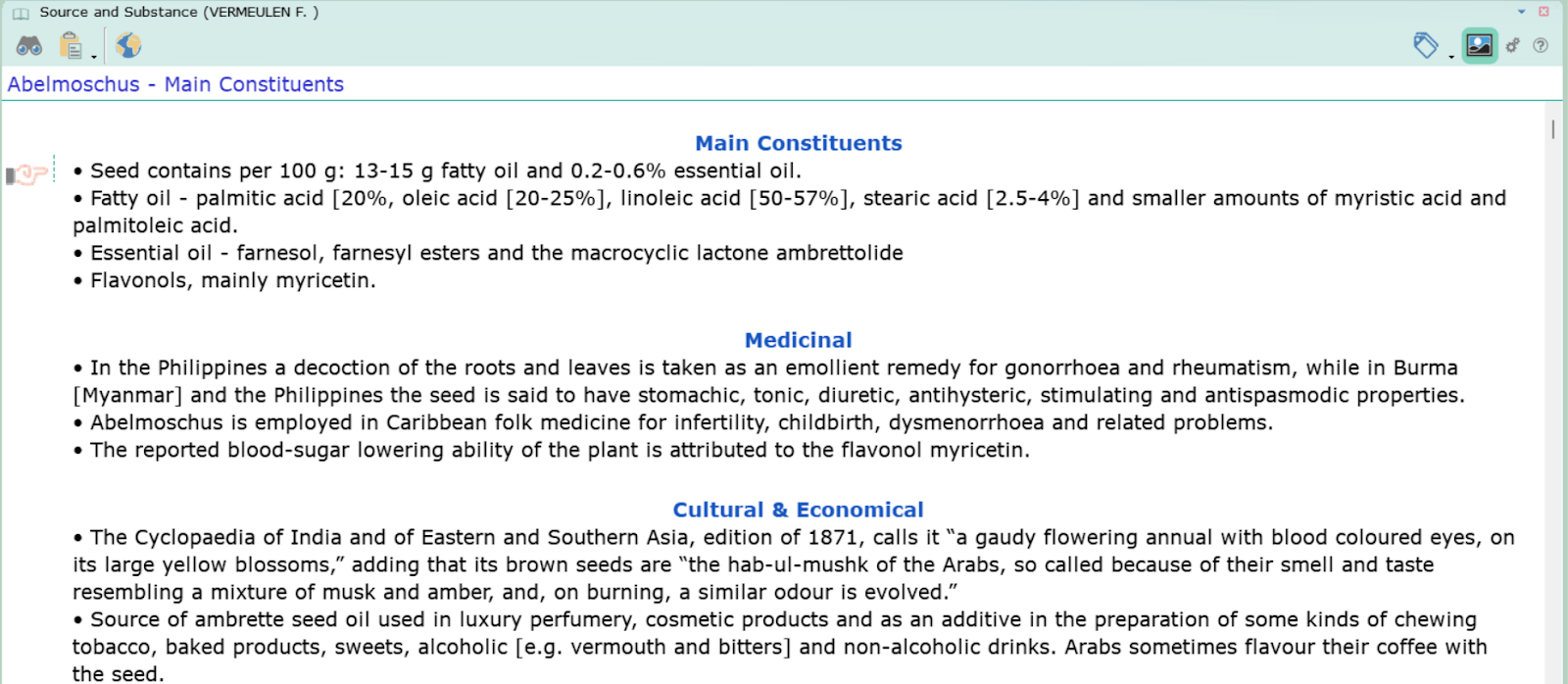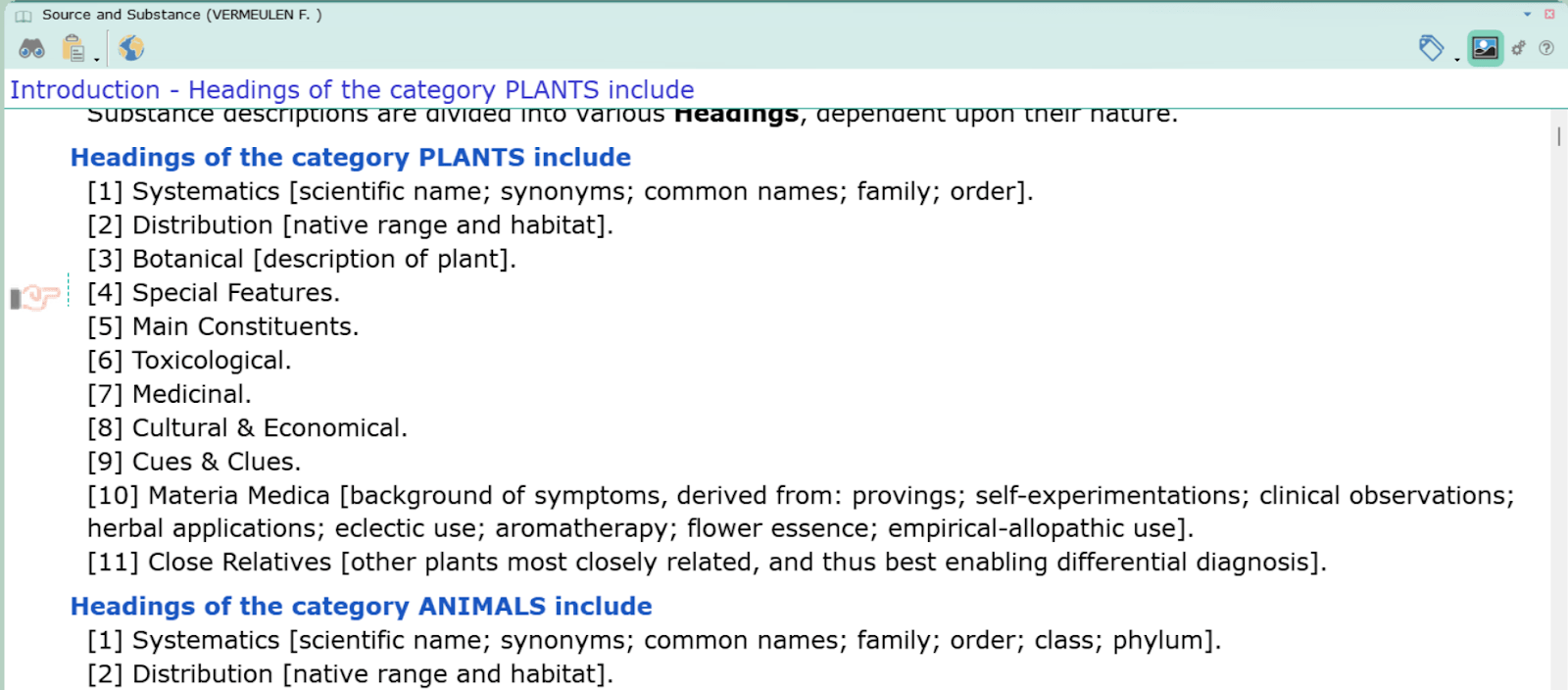Source and Substance is the go-to reference for any Homeopath wanting to investigate the source information of thousands of substances
Frans Vermeulen has done an incredibly rigorous job – collecting a wide variety of source information which is categorised coherently and succintly for the busy Homeopath.
If you find yourself looking up for a particular substance that may have contributed to the patient’s present state of ill health – the never been well since – then Source and Substance will be a great time-saver for you!
- With Source and Substance, you can
- Easily access information on each remedy’s scientific, toxicological and medicinal properties (even for as-yet unknown remedies)
- Find out what kind of proving was undergone and the level of clinical observsations made
- Discover the cultural and economical background
- Plants
- Find out about
- The main constituents
- The close relatives (botanical groupings)
- Other therapeutic applications; flower essences, herbalism, eclectic, allopathic etc.
- & more
- Find out about
- Animals
- Read about
- Distribution (native range and habitat)
- Body plan (external appearance)
- Diet and feeding
- Behaviour
- & more
- Read about
- Minerals
- Discover essential info about
- Compounds / alloys
- Occurence
- Chief Ores
- Features and properties
- Applications
- Medicinal / toxicological
- & more
- Discover essential info about
- Equivalent to 8,000 book pages!
- Remedies have a Materia Medica section detailing the sources of the symptoms – when, how and by whom they were obtained. e.g. provings, self-experimentations, clinical, allopathic, eclectic, empirical, herbal, toxicological, nutritional, etc.
- Remedies have a section named Cues & Clues listing special features of the substance that can assist in remedy selection and differential diagnosis.
Source and Substance allows you to search for the characteristic language used by your patient with reference to the remedy source – i.e. the natural behaviour of the substance itself
Contains extra material in the form of 228 summaries or original reports of hard to find provings, self-experimentations and poisonings
Remedies are divided in 11 Categories
- Animals
- Minerals
- Plants
- Fungi
- Nosodes
- Sarcodes
- Imponderables
- Chemicals
- Biochemicals
- Organic compounds
- Pharmaceuticals
- Categories are subdivided in Kind, Drug class, or Chemical class
- E.G:
- Kind of plant; fern, herb, tree, liana, vine, moss
- Kind of animal; mammal, fish, bird, reptile, insect, spider
- Kind of fungus; mushroom, polypore, mould, yeast, lichen
- Kind of mineral; metal, metalloid, salt, gemstone, spring water
- Examples of Drug class: Alpha blocker. Analgesic. Anticholinergic. Antihistaminicum
- Examples of Chemical class: Alcohol. Amine. Carboxylic acid. Hydrocarbon
- E.G:






